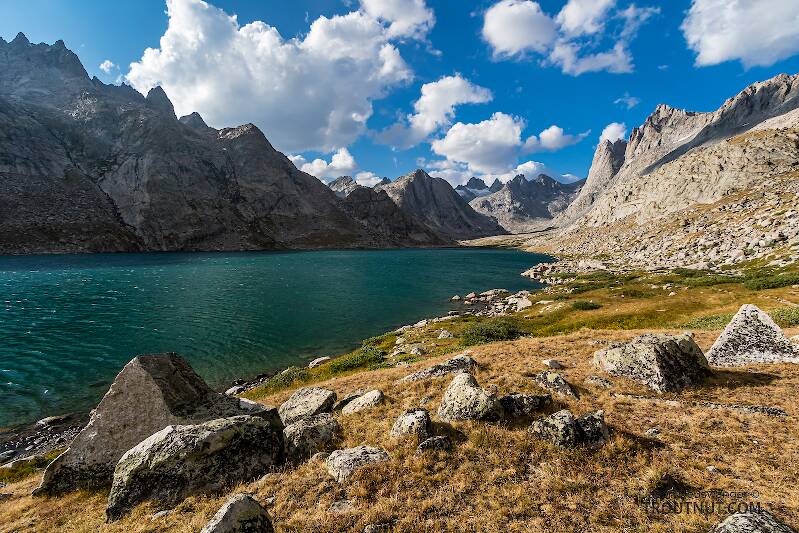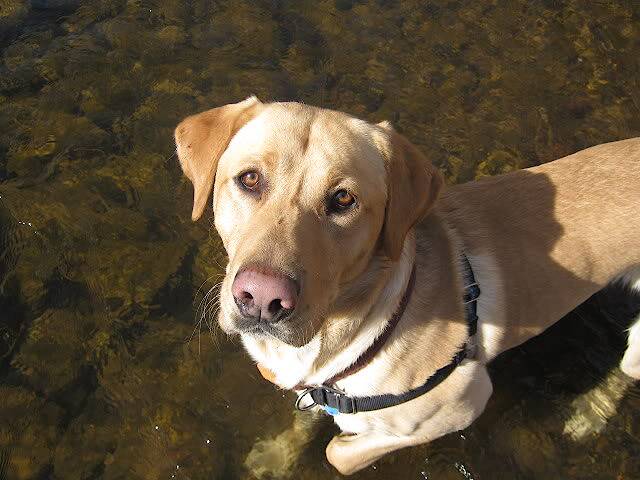
Hex Mayflies
Hexagenia limbata
The famous nocturnal Hex hatch of the Midwest (and a few other lucky locations) stirs to the surface mythically large brown trout that only touch streamers for the rest of the year.
Featured on the forum

This is an interesting one. Following the keys in Merritt R.W., Cummins, K.W., and Berg, M.B. (2019) and Jacobus et al. (2014), it keys clearly to Ephemerella. Jacobus et al provide a key to species, but some of the characteristics are tricky to interpret without illustrations. If I didn't make any mistakes, this one keys to Ephemerella mucronata, which has not previously been reported any closer to here than Montana and Alberta. The main character seems to fit well: "Abdominal terga with prominent, paired, subparallel, spiculate ridges." Several illustrations or descriptions of this holarctic species from the US and Europe seem to match, including the body length, tarsal claws and denticles, labial palp, and gill shapes. These sources include including Richard Allen's original description of this species in North America under the now-defunct name E. moffatae in Allen RK (1977) and the figures in this description of the species in Italy.

Troutnut is a project started in 2003 by salmonid ecologist Jason "Troutnut" Neuswanger to help anglers and
fly tyers unabashedly embrace the entomological side of the sport. Learn more about Troutnut or
support the project for an enhanced experience here.
WestCO on Oct 1, 2011October 1st, 2011, 8:49 am EDT
When you guys are fishing "wet flies" are you fishing it with that English rig of like 5 flies where you jerk it? I've never done that and honestly have never really had any interest. I love fishing dries so much I just don't think I could ever find interest in using wet flies. I think I accomplish the same tactic by soaking a sparkle dun and letting it float below the film. But maybe not. Why do you like wet flies? Just fun to tie?
...but fishermen I have noticed, they don't care if I'm rich or poor, wearing robes or waders, all they care about is the fish, the river, and the game we play. For fishermen, the only virtues are patience, tolerance, and humility. I like this.
Softhackle on Oct 1, 2011October 1st, 2011, 11:31 am EDT
WestCO,
I am a lover/practitioner of the wingless wet fly. I fish wets as single flies, mostly, however I often use a two or three fly rig for certain conditions.
Wet flies such as these can be fished downstream , across, or upstream. They can be fished in the film, just under, mid column, deep, or from bottom to top. Versatility is their middle name, and they work, often times, when NOTHING else will.
North Country wets or soft-hackles as we call them ala Sylvester Nemes were/are actually designed for upstream fishing. In fact any Yorkshire-man would probably frown upon using them downstream. Here in the States, we fish them how they work and do not omit or discount other methods, including downstream.
Fishing them in upstream or up and across can be every bit as exciting as dry fly fishing as we know it. To ignore them is a big mistake I feel many fly fisherman make. Another nice thing is they can be taken as just about any aquatic insect in various stages. Just my opinion.
Mark
I am a lover/practitioner of the wingless wet fly. I fish wets as single flies, mostly, however I often use a two or three fly rig for certain conditions.
Wet flies such as these can be fished downstream , across, or upstream. They can be fished in the film, just under, mid column, deep, or from bottom to top. Versatility is their middle name, and they work, often times, when NOTHING else will.
North Country wets or soft-hackles as we call them ala Sylvester Nemes were/are actually designed for upstream fishing. In fact any Yorkshire-man would probably frown upon using them downstream. Here in the States, we fish them how they work and do not omit or discount other methods, including downstream.
Fishing them in upstream or up and across can be every bit as exciting as dry fly fishing as we know it. To ignore them is a big mistake I feel many fly fisherman make. Another nice thing is they can be taken as just about any aquatic insect in various stages. Just my opinion.
Mark
"I have the highest respect for the skilled wet-fly fisherman, as he has mastered an art of very great difficulty." Edward R. Hewitt
Flymphs, Soft-hackles and Spiders: http://www.troutnut.com/libstudio/FS&S/index.html
Flymphs, Soft-hackles and Spiders: http://www.troutnut.com/libstudio/FS&S/index.html
Jmd123 on Oct 1, 2011October 1st, 2011, 11:56 am EDT
They can be effective on species other than trout as well. I fished a #12 Grizzly King - a particualry colorful wet fly, which I've also tied as a dry fly and streamer - in the San Marcos River in TX and got some nice redbreast sunfish on it. Those sunnies became my "trout" down there - colorful, living in swifter waters, and hitting dries (and wets) with abandon!
Jonathon
P.S. They would probably also be deadly on sunfish in these parts as well. I'll have to do some field research in this regard over the next couple of months...
Jonathon
P.S. They would probably also be deadly on sunfish in these parts as well. I'll have to do some field research in this regard over the next couple of months...
No matter how big the one you just caught is, there's always a bigger one out there somewhere...
WestCO on Oct 1, 2011October 1st, 2011, 3:21 pm EDT
I may have to give it a go. I've been tying no-hackle duck wing Green Drakes lately but I've yet to fish them. I will have to wait until next July. Maybe I'll start trying out some soft hackle patterns if you really enjoy it. Are you really active on the retrieve with them? More or less than a streamer retrieve?
...but fishermen I have noticed, they don't care if I'm rich or poor, wearing robes or waders, all they care about is the fish, the river, and the game we play. For fishermen, the only virtues are patience, tolerance, and humility. I like this.
Sayfu
Posts: 560
Posts: 560
Sayfu on Oct 2, 2011October 2nd, 2011, 5:06 am EDT
Hope I'm not duplicating much, but I use to sell Mustad's years ago, and remember when the Japanese entered the hook market. A central marketing approach they used was to create their dryfly hooks with a slightly longer shank then the standard Mustad 98040. This gained favor with fly tiers even though it threw off hook sizing. The new Mustad's, identified as Mustad "Supreme" hooks are sharper, and created to compete with the Japanese hooks. I still have lots of the older Mustads, and carry, and have a bigger, metal file at my tying desk, that takes off metal with a stroke of the file that I much prefer over the smaller, diamond type tools. Stroke, stroke, and I have a needle point on these older hooks. Where I make the distinction in the two hook makers is the smaller hooks like the caddis/pupa hooks I use a lot. If I want to tie on a short shank #18 lets say, to create a size #20-22 fly with a bigger hook gape, I go to the Tiemco's, or Dai-Reichi (sp?) hooks because their hooks are stronger in the small sizes.
Quick Reply
Related Discussions
Topic
Replies
Last Reply




